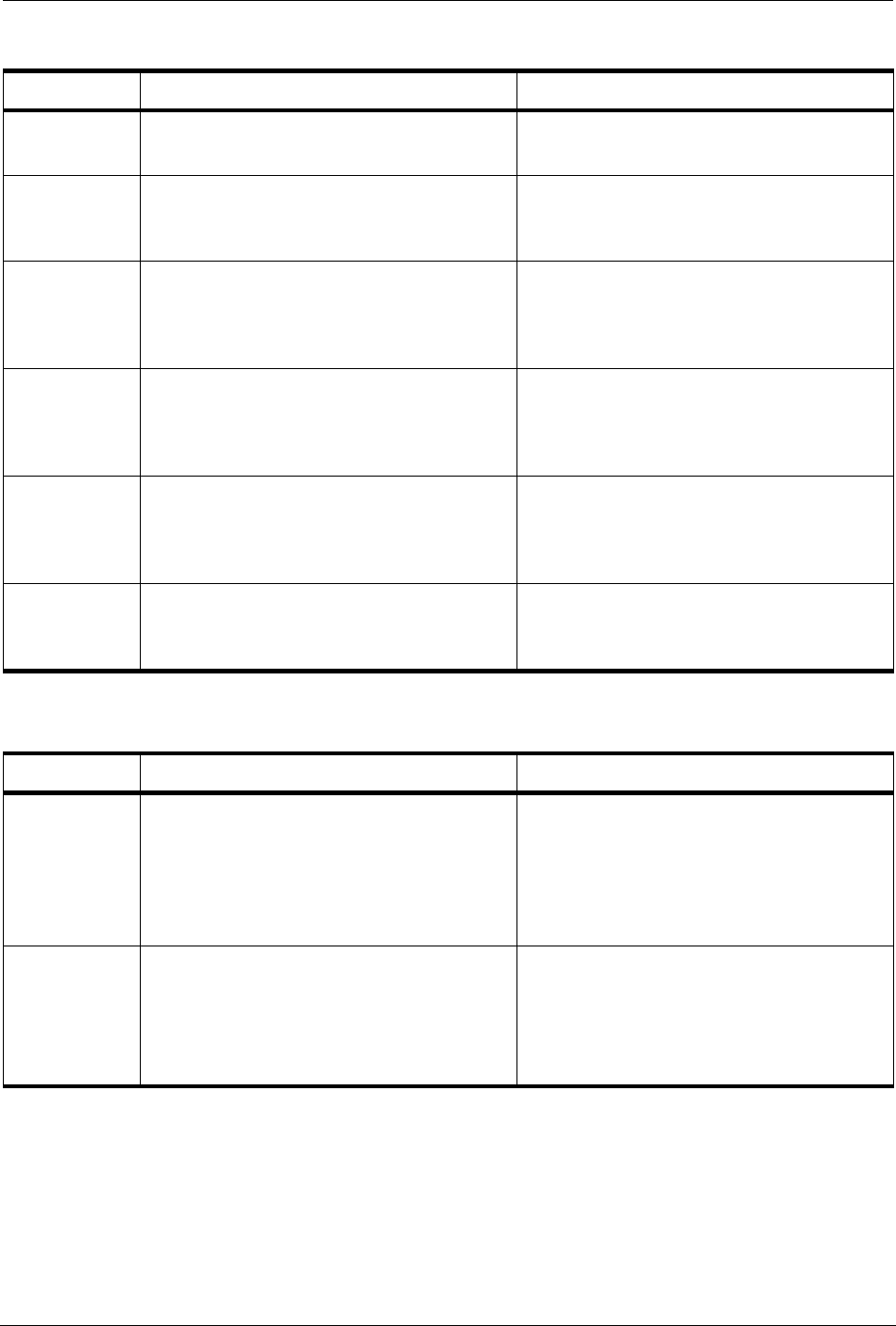
DART 300 Migration Guide Comparative AT Command Reference
2110291 Rev 1.0 Page 22
Table 4-1: Basic AT Commands (continued)
Command DART 200 DART 300
Q[n]
Quiet – Result Code Display Option
Suppress result codes to the DTE.
Quiet – Result Code Display Option
Same behaviour.
S[n]=[x]
S-Register Write
Sets the contents of the specified S-register (n)
to the new value (x).
S-Register Write
Same behaviour.
S[n]?
S-Register Read
The contents of the specified S-register (n) are
returned to the host (DTE) as ASCII decimal
digits.
S-Register Read
Same behaviour.
V[n]
Verbose – Result Code Form
Specifies whether the modem displays the
result codes in numeric format or as words
(verbose).
Verbose – Result Code Form
Same behaviour.
X[n]
Result Code Select
Selects extended result codes (0 to 10) or only
the set from 0 to 4.
Result Code Select
The DART 300 modem takes no action. This
command is acknowledged with OK and
ignored. All result codes are always enabled.
Z
Reset to Stored Profile
The modem loads the profile from permanent
storage into the active memory.
Reset to Stored Profile
Same behaviour.
Table 4-2: AT [&] Commands
Command DART 200 DART 300
&C[n]
Data Carrier Detect Control
Selects meaning of DCD control signal.
Consult DART 200 reference for details of
options.
Data Carrier Detect Control
The DART 300 modem takes no action. This
is acknowledged with OK and ignored. DCD
always indicates session status; on = open, off
= closed. This is equivalent to the
DART 200’s default option &C1.
&D[n]
Data Terminal Ready Options
Controls action taken on an on-to-off transition
of DTR. See the DART 200 User Guide for
details.
Default is &D0
Data Terminal Ready Options
Same behaviour. (See Section 3.1.1 above if
hardware flow control is not provided by your
local host device.)
Default is &D2
